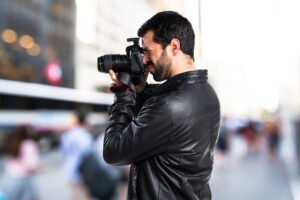Field-Programmable Gate Arrays (FPGAs) and Central Processing Units (CPUs) are two essential components in the realm of computing that play significant roles in driving the constantly changing technological landscape.
These physical components act as the backbone of a wide range of applications, from data centers to consumer devices.
To develop and optimize computing systems, it is necessary to comprehend the distinctions between FPGAs and CPUs in order to make wise choices.
FPGAs have significantly increased in popularity in recent years because of their adaptability and programmability.
Historically, general-purpose computing activities have been handled by CPUs, but FPGAs have become a viable option in a few niche markets.
It’s critical to investigate the architectural differences, performance traits, power efficiency, adaptability, and scalability of these two components in order to go deeper into the FPGA vs. CPU argument.
We can obtain a thorough understanding of their special advantages and uses by doing this.
By the end of this investigation, readers will have a better understanding of the FPGA vs. CPU argument, empowering them to choose the most appropriate hardware for their unique computing requirements.
We will also look at how FPGA and CPU technologies are developing, providing insights into possible future innovations and trends that could have an impact on the computing sector in the years to come.
Overview of FPGA and CPU
Both CPUs and FPGAs or field-programmable gate arrays, are necessary parts of contemporary computer systems. Despite having comparable functions, they are fundamentally different in terms of architecture, performance, power usage, flexibility, and cost.
It’s essential to comprehend these variations in order to make the best decision for a certain application.
FPGA (Field-Programmable Gate Array):
Integrated circuits called FPGAs can be programmed and reprogrammed to carry out particular functions. They are made up of a variety of embedded memory blocks, interconnects, and customizable logic blocks (CLBs).
FPGAs are incredibly adaptable and provide scalable hardware acceleration for a range of computational activities. They are used in fields like high-performance computing, aerospace, automotive, and telecommunications.
CPU (Central Processing Unit):
The “brains” of a computer system, or central processing units (CPUs), are in charge of carrying out calculations and executing instructions.
They are made up of a control unit, an ALU, registers, and different cache memory levels.
CPUs are made for general-purpose computing activities and excel in sequential processing. From servers and supercomputers to smartphones and laptops, they are present in practically all computing devices.
Architecture and Design:
The reconfigurable architecture of FPGAs enables flexible personalization. They are made up of programmable logic blocks (PLBs), which may be combined to form numerous circuit configurations and implement a variety of logic functions.
Embedded memory blocks for storing data and I/O interfaces for interacting with other devices are also features of FPGAs.
The fixed architecture of CPUs is built for the sequential execution of instructions.
ALUs are used for arithmetic and logical operations, registers are used for temporary storage, and a memory hierarchy with main memory and cache layers makes up their structure. The control unit controls the flow of instructions.
Performance and Parallelism:
Massive parallelism is a feature of FPGAs that enables the execution of numerous operations at once.
They are useful for computationally intensive applications including signal processing, picture identification, and machine learning because they can carry out tasks in parallel.
Additionally, FPGAs provide programmable hardware acceleration, resulting in appreciable speed improvements for particular activities.
On the other side, serial processing is a strength of CPUs. They follow a predetermined order as they carry out each command one at a time.
The efficient handling of a variety of tasks by CPUs qualifies them for general-purpose computing.
Even though they may have several cores, CPUs have less parallelism than FPGAs.
Power Efficiency and Energy Consumption:
Particularly for certain activities that may be delegated to specialized hardware, FPGAs are renowned for their power efficiency.
For specific computations, FPGAs can achieve low power consumption by using fine-grained power optimization strategies. However, because of their ability to be reconfigured, FPGAs also have static power consumption.
Compared to FPGAs, CPUs use more power, especially when carrying out general-purpose operations. CPUs use a variety of power management strategies to handle this, including voltage scaling, dynamic frequency scaling, and clock gating.
Despite improvements in CPU architecture and process technology, FPGAs continue to be more effective at maximizing power for particular workloads.
Flexibility and Adaptability:
FPGAs provide a great level of adaptability and flexibility. Hardware circuits can be quickly prototyped, developed, and customized thanks to their changeable nature.
FPGAs are thus appropriate for applications that call for hardware acceleration or specialized functionality. FPGA designs allow for quick iterations, accelerating time-to-market for some projects.
Contrarily, CPUs are built to be flexible enough to support a variety of software applications. They are interoperable with different software ecosystems because of their standardized architectures and instruction sets.
CPUs are excellent for jobs that heavily rely on software execution, making development and updates simply without requiring hardware changes.
Cost and Scalability:
FPGAs typically cost more up front than CPUs when it comes to price. Specialized components like FPGAs demand more research and programming work, which drives up production costs.
FPGAs, however, can offer long-term cost savings in some circumstances. Because of their hardware acceleration capabilities, less expensive server infrastructure or specialized hardware may be required to achieve the same level of performance.
Contrarily, CPUs profit from scale economies and mass production.
As a result of their lower cost and greater accessibility, CPUs are the favored option for the majority of general-purpose computer applications.
A wide variety of reasonably priced CPU solutions are available on the market to suit various spending limits.
Scalability is another aspect to take into account. Every each generation of CPUs follows a well-established roadmap that sees core counts rise and performance increase.
Easy updates and scalability in computing systems are made possible by this scalability. Due to their specialized nature, FPGAs may have scalability restrictions even though they offer flexibility.
Expanding FPGA-based systems might need for more hardware integration and development work.
Conclusion:
In conclusion, FPGAs and CPUs have unique qualities that make them suited for various computing jobs. FPGAs deliver great speed and power efficiency for particular applications while excelling at hardware acceleration, parallel processing, and customization.
Contrarily, CPUs offer general-purpose processing capability, software ecosystem adaptability, and cost-effective solutions for a variety of jobs.
The decision between an FPGA and a CPU is based on the application’s particular needs. The best answer depends heavily on factors including performance requirements, power efficiency, adaptability, and financial constraints.
The advantages of each technology can often be combined to produce extremely effective and adaptable computing systems by using both FPGA and CPU. Future improvements in FPGA and CPU architectures are anticipated, which will increase the computer industry’s potential and applications.


![What is FPGA Introduction to FPGA Basics [2023] computer-chip-dark-background-with-word-intel-it](https://fpgainsights.com/wp-content/uploads/2023/06/computer-chip-dark-background-with-word-intel-it-300x171.jpg)









